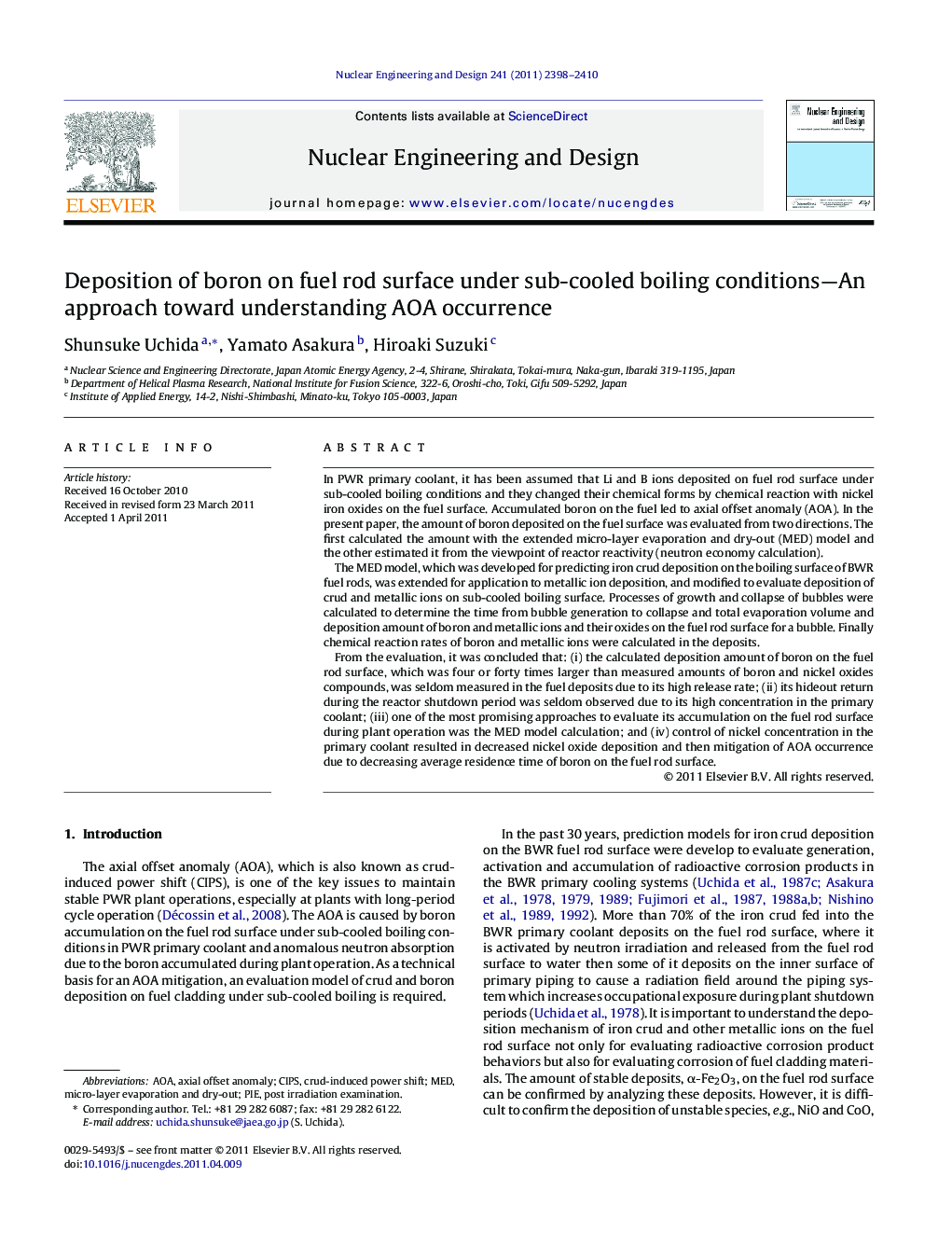| کد مقاله | کد نشریه | سال انتشار | مقاله انگلیسی | نسخه تمام متن |
|---|---|---|---|---|
| 297540 | 511761 | 2011 | 13 صفحه PDF | دانلود رایگان |

In PWR primary coolant, it has been assumed that Li and B ions deposited on fuel rod surface under sub-cooled boiling conditions and they changed their chemical forms by chemical reaction with nickel iron oxides on the fuel surface. Accumulated boron on the fuel led to axial offset anomaly (AOA). In the present paper, the amount of boron deposited on the fuel surface was evaluated from two directions. The first calculated the amount with the extended micro-layer evaporation and dry-out (MED) model and the other estimated it from the viewpoint of reactor reactivity (neutron economy calculation).The MED model, which was developed for predicting iron crud deposition on the boiling surface of BWR fuel rods, was extended for application to metallic ion deposition, and modified to evaluate deposition of crud and metallic ions on sub-cooled boiling surface. Processes of growth and collapse of bubbles were calculated to determine the time from bubble generation to collapse and total evaporation volume and deposition amount of boron and metallic ions and their oxides on the fuel rod surface for a bubble. Finally chemical reaction rates of boron and metallic ions were calculated in the deposits.From the evaluation, it was concluded that: (i) the calculated deposition amount of boron on the fuel rod surface, which was four or forty times larger than measured amounts of boron and nickel oxides compounds, was seldom measured in the fuel deposits due to its high release rate; (ii) its hideout return during the reactor shutdown period was seldom observed due to its high concentration in the primary coolant; (iii) one of the most promising approaches to evaluate its accumulation on the fuel rod surface during plant operation was the MED model calculation; and (iv) control of nickel concentration in the primary coolant resulted in decreased nickel oxide deposition and then mitigation of AOA occurrence due to decreasing average residence time of boron on the fuel rod surface.
► AOA is one of key issues for maintaining stable PWR operation.
► AOA is caused by boron accumulation on fuel rods under sub-cooled boiling.
► Unstable depositing boron was seldom measured on fuel rods.
► MED model was originally developed for crud deposition on boiling surface.
► Amount of boron on fuel rod can be evaluated with MED model.
Journal: Nuclear Engineering and Design - Volume 241, Issue 7, July 2011, Pages 2398–2410